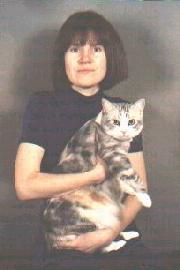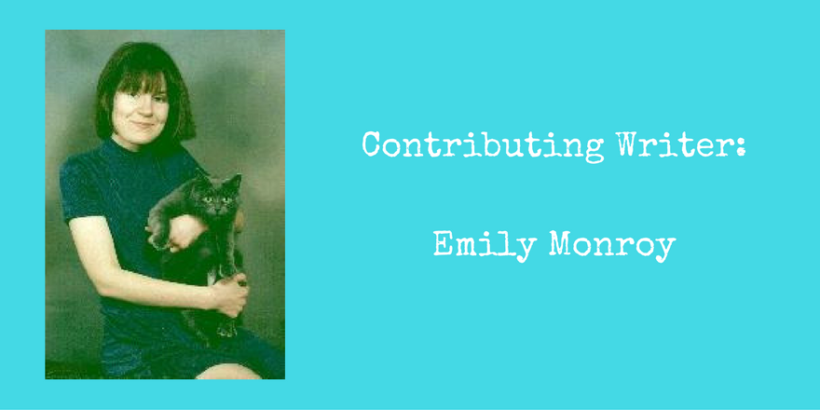Mixed-Race Scandinavians
by Emily Monroy
April – May 2014

Curious to know what her connection to Denmark might be, I said, “I noticed you have a sticker of the Danish flag on the back of your car.”
“My mom’s Danish,” she replied.
“Oh, I’m of Norwegian descent. Our flag is just like yours except that it has a blue cross.” (Denmark’s flag is red with a white cross, Norway’s red with a blue cross outlined in white.)
Just then an older White woman who had apparently been listening to the conversation walked over, smiled, and started talking to me in what must have been Danish (Danish, Norwegian and Swedish are so similar they’re often called the dialects of the Scandinavian language). I apologized and told her I didn’t speak Norwegian.
I wished a Merry Christmas to the mother and daughter, and we parted ways. I felt somewhat ashamed of myself for automatically presuming that the girl was NOT Danish. After all, thanks to some Italian and Irish ancestry I’m hardly the typical blond-haired blue-eyed Scandinavian. But as I pondered the matter further, I realized there were a number of mixed-race Scandinavians in my midst. A children’s group to which I once brought my daughter included a small and very pretty mulatto girl with a Swedish mother. My best friend on a summer exchange program to Quebec was a young woman whose mother was from Sweden and father from Egypt (for the purpose of this essay, I’ll go by the Canadian government’s current classification of Arabs as non-White, even if some of them are physically indistinguishable from Greeks or Southern Italians). My family is no stranger to interracial relationships either. A cousin of mine married a Black American man and has two biracial sons. My own daughter is part Native American on her Nicaraguan father’s side, though like most Latin Americans he has Spanish ancestry as well.
Scandinavia boasts several well-known individuals of mixed heritage in its ranks. Among them are singer Nenah Cherry (Swedish mother, African father), Kersti Bowser (a Black-Swedish model who joked she went to tanning salons to “keep her Swedish side in check”); and Rikke Roenholt (Danish mother, Ghanaian father), a runner who will be representing Denmark in the 2008 Olympics. Famous White Scandinavians who have been involved in interracial unions include Icelandic singer Bjork (had a relationship with a Black man named Goldie which caused an anti-miscegenation fan of hers to commit suicide on videotape), Swedish actress May Britt (wife of musician Sammy Davis Jr.), Swedish actor Dolph Lundgren (ex-lover of Grace Jones), and Denmark’s Prince Joachim (formerly married to a woman of Austrian and Chinese descent).
Any discussion on mixed-race Scandinavians would be incomplete without a mention of Greenland. An overseas territory of Denmark, Greenland was colonized by that nation in the 1700s. Most Greenlanders are of mixed Danish and Inuit descent. Recent genetic studies have shown that as with Latin America, Greenland’s present population resulted from unions of European men with native women. However, while colonization in Latin America led to an almost complete Westernization of that region (most Latin American mestizos, like my daughter’s father, speak Spanish as their first language and don’t identify at all as Indian), Greenlanders have kept much more of their original culture. For example, Greenlandic, an Inuit language, is the mother tongue of most Greenlanders, though many know Danish too. On the other hand, the bulk of Greenland’s population belongs to the Lutheran Church, as does Denmark’s.
At an individual level, the degree to which mixed-race Scandinavians retain their culture varies. My above-mentioned friend in Quebec, for instance, spent long periods of time as a child in Sweden and spoke fluent Swedish. In contrast, my grandmother, whose family came from Norway, married a non-Scandinavian man and didn’t teach Norwegian to my mother, so I am unfortunately unable to pass the language on to my daughter and any other children I may have in future.
One “marker” of Scandinavian heritage is Lutheranism, even if not all Scandinavians are Lutheran and many of those who are are not particularly religious. Here again, families differ. Though her father was Muslim, my Swedish-Egyptian friend was raised Lutheran. However, a Finnish-Canadian colleague married to a Filipino woman was bringing up his children in his wife’s Catholic faith. I myself have had my daughter baptized in the Lutheran Church. While the principal reason for doing so is to share my personal faith with her, an added bonus is the “link” it provides to her Scandinavian ancestors.
On my kitchen wall is a picture of a girl in traditional Norwegian dress. My mother remarked that she might make a similar costume so that my daughter could be a “little Norwegian girl” for Halloween.
“But she’s already a little Norwegian girl!” I protested.
“With those big brown eyes [courtesy of her father]?” my mom responded, and we both laughed.
***
Now I would like to include an interview with a real-life mixed-race Scandinavian – writer Heidi Durrow, author of the book Light-skinned-ed Girl. Check out her website at www.heidiwdurrow.com – and read her answers to my questions.
Q: From what I understand, your mother is Danish and your father African-American. How and where did your parents meet?
A: My parents (my mother is from Herning, Denmark and my father was originally from Texas) met on an American Air Force base in Germany. My mom was working as a nanny to an American family – she wanted to practice her English while she earned some money to go back to school.
Q: Where were you born?
A: I was born in Seattle, WA at the Swedish Hospital . Both my brothers (one older and one younger) were born in Herning. I am jealous of this to this day – but tease them that they cannot ever be President of the US because they were born on foreign soil. Silly, right?
Q: Do you speak Danish fluently? If so, is it your first language (meaning the first language you learned as a child)?
A: Yes, I would say I’m fluent in Danish – though each time I’ve gone back as an adult I hear more of an accent developing –an unintelligible one at that—a strange mixture of American and ???? Also, my language is kind of dated and I sound like my mother from forty years ago – I haven’t updated my slang-and I haven’t updated my accent to go with the Copenhageners –but they are kind to me when I go and don’t make fun of me –heee hee.
Q: Have you spent long periods of time in Denmark?
A: As a child we spent long summers and holidays there. Recently, I received a grant from the American Scandinavian Foundation to do research for a book I’m writing. I spent a month in Copenhagen in a little apartment I rented. I spent time at the libraries and doing interviews and also with my family. It was an amazing experience to be part of Danish life for so long as an adult on my own terms.
Q: Would you say that when growing up your father’s or your mother’s background had the greatest influence in your home?
A: My mother’s background was the most important. We spoke only Danish with my mother until I was about 11 or 12. When my dad would come home from work, we would speak English around him but if he wasn’t in the room it was Danish again. We ate Danish food, celebrated holidays the Danish way – and I think were raised with a Danish sensibility – the bad part: Janteloven – but also something more intangible that I think people here would say is European but to me seems specifically Danish.
Q: Were you raised in the Church of Denmark (the Lutheran Church, that is)?
A: I was christened Lutheran, but did not have a confirmation. It was a great wish to have one as a child, but by the time I was 14, we were in the US and it would be another several years before we could AFFORD for me to travel to Denmark again.
Q: How do you identify ethnically now?
A: My ethnic identification has gone through many changes. For the last long while, I have embraced saying that I am biracial and bicultural – African-American and Danish. I think this specificity annoys some people – some who think, get over it you’re black since you don’t look white and also those who think: but you’re American and that whole Danish thing is just quaint. I am tired of thinking what they are thinking and just say what is the truth now.
Q: Do you find that racism is widespread in Denmark? Have you ever encountered racism in that country?
A: I feel lucky not have experienced racism in Denmark. I was either too ignorant to recognize it or I have been shielded from it. That is not to say that I haven’t been privy to people making comments about me. Comments like “there are more and more of THOSE people coming” – an overhead remark when I had lunch with a cousin – I assume they thought I was Arab? Turkish? A foreigner who was now living in Denmark? There is a lot of discrimination against them. It’s disturbing. My brothers have experienced racism, I think – but those are their own stories. I think ignorance about racial difference is widespread in Denmark, unfortunately. It’s a small land and for a long time they haven’t had contact with “others” – but I think it is changing. There are more and more mixed-race Danes who are in the media and I think that makes it all less strange.
Q: In the past few years the Danish government made news because it tightened its immigration laws, making it more difficult to obtain political asylum and bring foreign-born spouses to that country. As a person of part non-European ancestry, what did you think of these new laws?
A: The new anti-immigrant laws are disturbing and not at all Danish – Danes have always been and I believe will again be free-spirited and forward-thinking in regards to race. That’s my belief.
Emily Monroy is a professional translator and is of Irish, Italian and Norwegian descent. Born in Windsor, Ontario, she now resides in Toronto. Her articles have appeared in several publications, including Interracial Voice, Cats Canada, and Urban Mozaik. She welcomes feedback on her articles. You can contact Emily here

